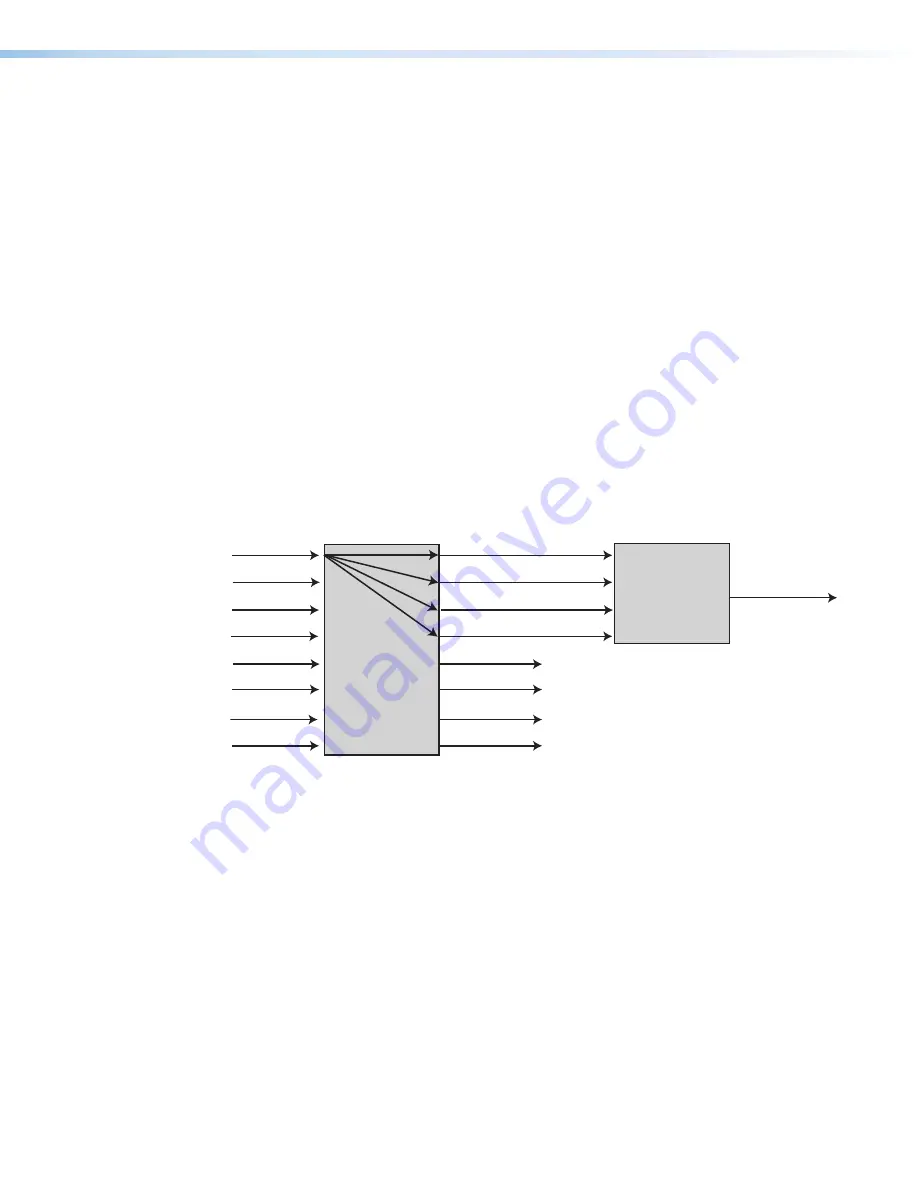
MGP Pro Series • Special Applications
92
When the MGP Pro is attached to a matrix switcher, such as the CrossPoint Ultra shown
in
on the previous page, inputs 1 through 4 come to the MGP Pro through the
switcher, which supports RGB, component video, S-video, and composite video signal
types. This application can be used with an MGP 464 Pro.
In this type of configuration:
•
Window 1 on the MGP Pro displays input 1, window 2 displays input 2, and so forth.
•
Input switches are made at the matrix switcher instead of at the MGP Pro.
•
Input presets are recalled on the MGP Pro to correctly set up the input coming from the
switcher. This setup can include the input name, the video signal type, picture controls,
and advanced input configuration functions such as setting the active lines and pixels,
total lines and pixels, and pixel phase.
You can perform the required MGP Pro setup operations using SIS commands (see
Remote Configuration and Control
Setting Up the MGP Pro to Work with a Matrix Switcher
To set up the MGP Pro to work with a matrix switcher:
1.
Install and connect the MGP Pro as described in
with the exception of step 3.
In place of step 3 on page 5
, do the following:
Connect the four (or two) fully-configurable inputs of the MGP Pro to four (or two) of the
matrix switcher outputs (see figure 41).
I
nput 1
Input 2
Input 3
Input 4
Input 5
Input 6
...
Input 64
Input 1
Output 1
Input 2
Input 3
Input 4
Output 2
Output 3
Output 4
Output 5
Output 6
...
Output 64
Matrix
Switcher
MGP 464
Output to Display
Figure 41.
Connecting the Matrix Switcher to an MGP Pro
2.
Size the windows on the MGP Pro to full screen. You can do this quickly by selecting
window preset 1, 31, 61, 91, or 121.
3.
On the matrix switcher, tie input 1 to the two or four switcher outputs that are
connected to the MGP Pro (see your matrix switcher user guide for the tie procedure).
4.
Select window 1 on the MGP Pro and configure the input as follows:
a.
Set the following input sampling parameters as desired: signal type, horizontal and
vertical start, total pixels, active pixels, and active lines.
b.
Set the following picture controls as desired: image size, image position, color, tint,
brightness, and contrast.
c.
Set the pixel phase for window 1, then mute the window to display the next window
behind it.
For analog inputs only,
repeat this step for windows 2, 3, and 4.
d.
Save the adjusted settings as Input Preset 1.
41






























